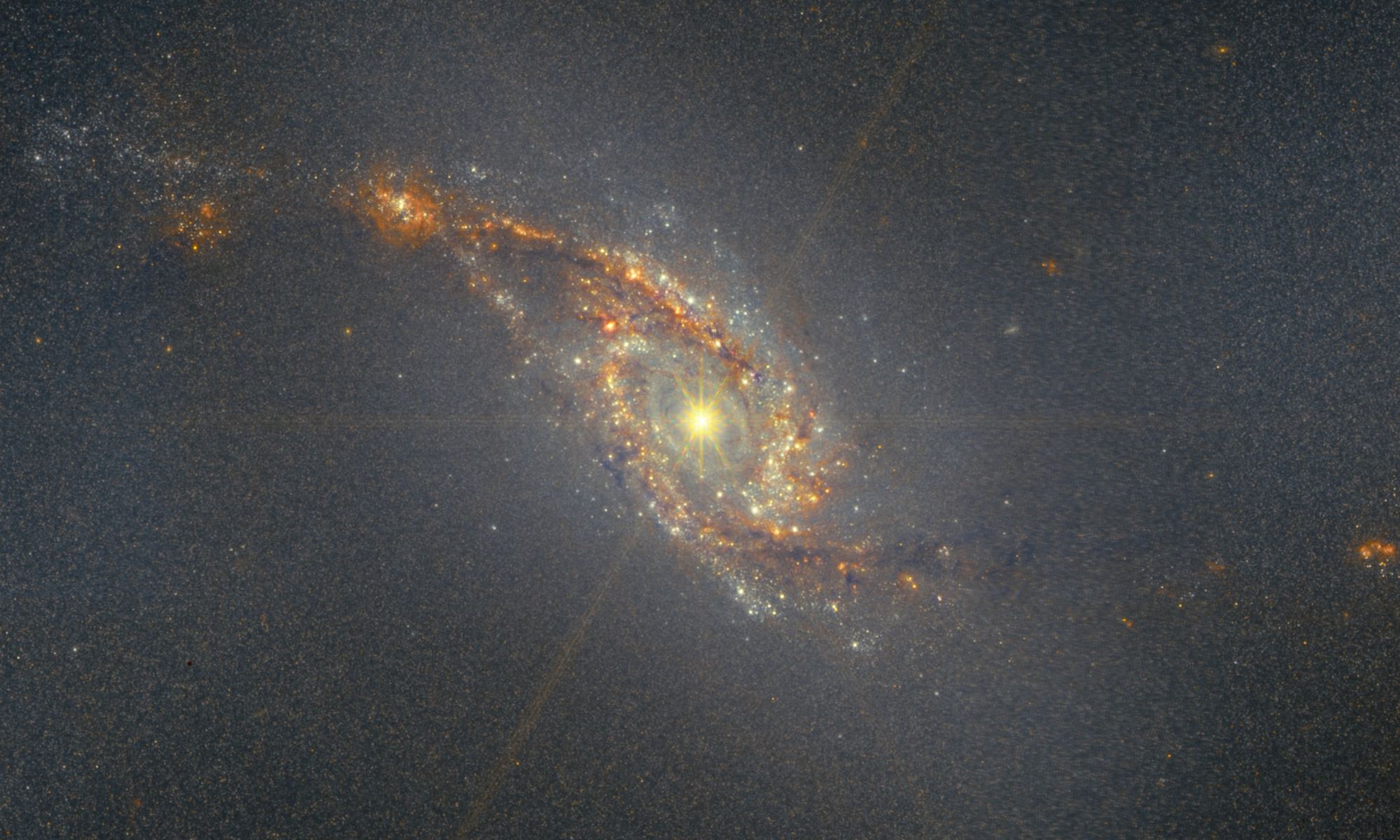Astrophotographer Judy Schmidt (aka. Geckzilla, SpaceGeck) is at it again! Earlier this month, she released a processed image of the Great Barred Spiral Galaxy (NGC 1365). The James Webb Space Telescope (JWST) recently observed this iconic double-barred spiral galaxy, which resulted in the most-detailed look at this galaxy to date. This time, Schmidt shared a series of images via Twitter that provide a closer look at NGC 1365’s core region, a widefield view that shows the galaxy’s long arms, and lovely animation that shows the galaxy in near- and mid-infrared wavelengths.
As we previously indicated here at Universe Today, NGC 1365 is a well-studied galaxy measuring 200,000 light years in diameter (twice that of the Milky Way Galaxy). It is recognized for its prominent central bar and wide arms, which give it a Z-like appearance, and the way large dust clouds obscure its interior structure. For these reasons, it was selected for observations by the JWST, which could observe the interior in greater detail thanks to its advanced suite of infrared instruments.
Like her previous image, Schmidt processes this image using data from the Physics at High Angular resolution in Nearby GalaxieS (PHANGS) survey. The first image shows a close-up of the center of NGC 1365 based on data obtained by Webb‘s Near-Infrared Camera (NIRCAM), which manages to capture the complexity of the central barred structure. This includes a dense star-forming region that looks like a halo (and extends east and west of the center), which surrounds the bright region at the very center that contains a supermassive black hole.
The second image shows a widefield view of NGC 1365 that captures the wide arms extending from its central bar. Here too, we are looking at data obtained by NIRCAM, which allows the star-forming regions in the arms to stand out from the gas and dust surrounding them. For the animation, Schmidt combined data obtained by Webb’s NIRCAM and Mid-Infrared Instrument (MIRI) to show how the material that makes up this galaxy appears in different wavelengths.
As Schmidt told Universe Today via Twitter: “[T]he near-infrared shows the stars and some dust while the mid-infrared shows dust almost exclusively.”
Once again, Schmidt’s rendering gives us a glimpse of Webb’s capabilities and the kinds of operations it will perform throughout its mission. As the most complex and advanced observatory ever launched (and the most sophisticated IR space telescope), it will provide the clearest and most detailed images of the cosmos to date. These will invariably lead to new insights and discoveries, ranging from discovering new bodies here at home and exoplanet characterization to how the earliest galaxies formed and evolved and the possible role of Dark Matter and Dark Energy.
You can check out more of Schmidt’s work on her Flickr page.

